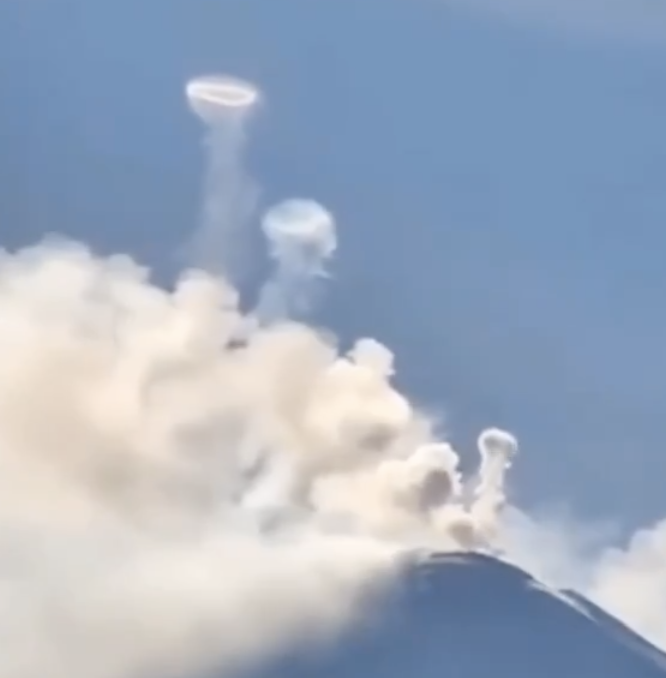Mount Etna, the largest volcano in Europe, and among the world’s most active and iconic volcanoes, has been sending up almost perfect rings of smoke into the air. The rings are a rare phenomenon that scientists refer to as volcanic vortex rings, which are produced roughly in the same way as the smoke rings that some cigarette smokers are able to blow out of their mouths.
Mount Etna
Mount Etna, sometimes referred to simply as Etna, is an active volcano on the east coast of Sicily, the largest island in the Mediterranean Sea, lying just off the toe of the Italian “boot”. Etna’s peak is the highest in Italy south of the Alps, and it is Europe’s largest and one of the most active volcanoes.
Etna’s summit has five craters, which are responsible for most of the volcano’s eruptions; there are also “flank” eruptions that occur out of 300-odd vents of varying sizes along the slopes of the mountain.
Etna is in almost constant activity, and has seen, since the year 1600, at least 60 flank eruptions and many more summit eruptions. In recent years, summit eruptions have occurred in 2006, 2007-08, on two occasions in 2012, in 2018, and 2021; flank eruptions have taken place in 2001, 2002-03, 2004-05, and 2008-09.
Etna has been a World Heritage Site since 2013, and according to UNESCO, the volcano’s eruptive history can be traced back 500,000 years. At least 2,700 years of this activity has been documented.
And what are volcanic vortex rings?
Vortex rings are generated when gas, predominantly water vapour, is released rapidly through a vent in the crater. The vent that has opened up in Etna’s crater is almost perfectly circular, so the rings that have been seen above the mountain since April 2 are also circular.
One of Europe's most active volcanoes located in Italy has been sighted puffing out giant smoke rings. pic.twitter.com/PwTTcur1Tl
— Historic Vids (@historyinmemes) April 11, 2024
